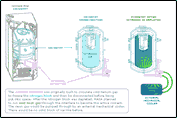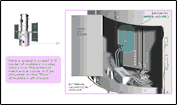 |

 How will we replace the ice?
How will we replace the ice?
Not possible... instead NASA decided to pump cold gas
into NICMOS from an external mechanical cooler. |

 Where will the cooler go?
Where will the cooler go?
The external mechanical cooler would be located next to
NICMOS, attached only by the tubes that would carry neon
gas. |
| |
|
 |
|
 |
